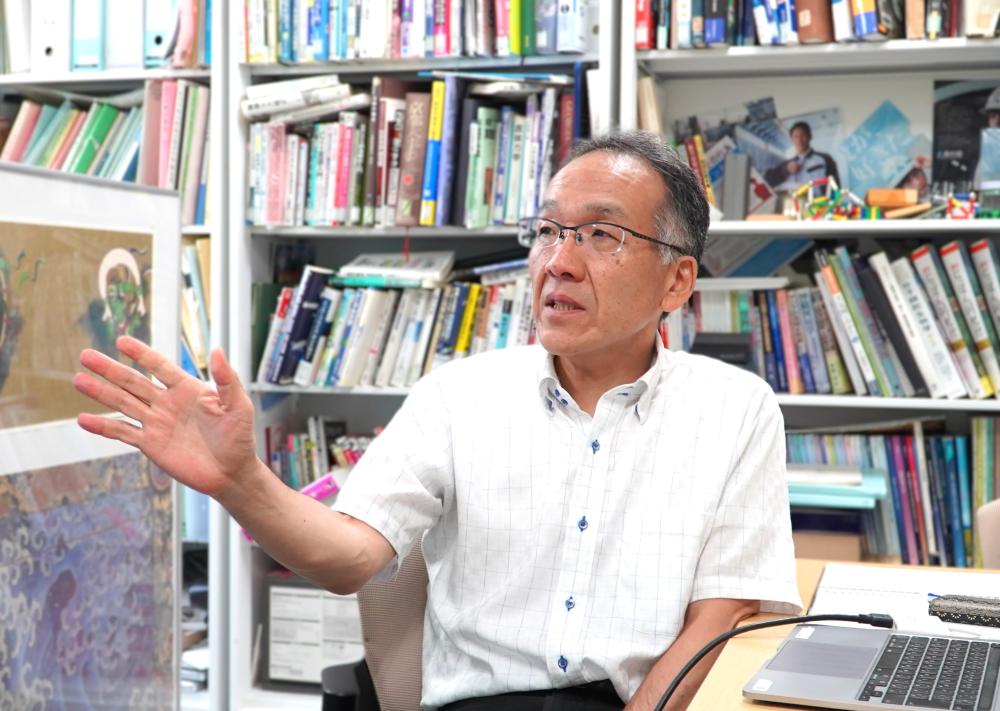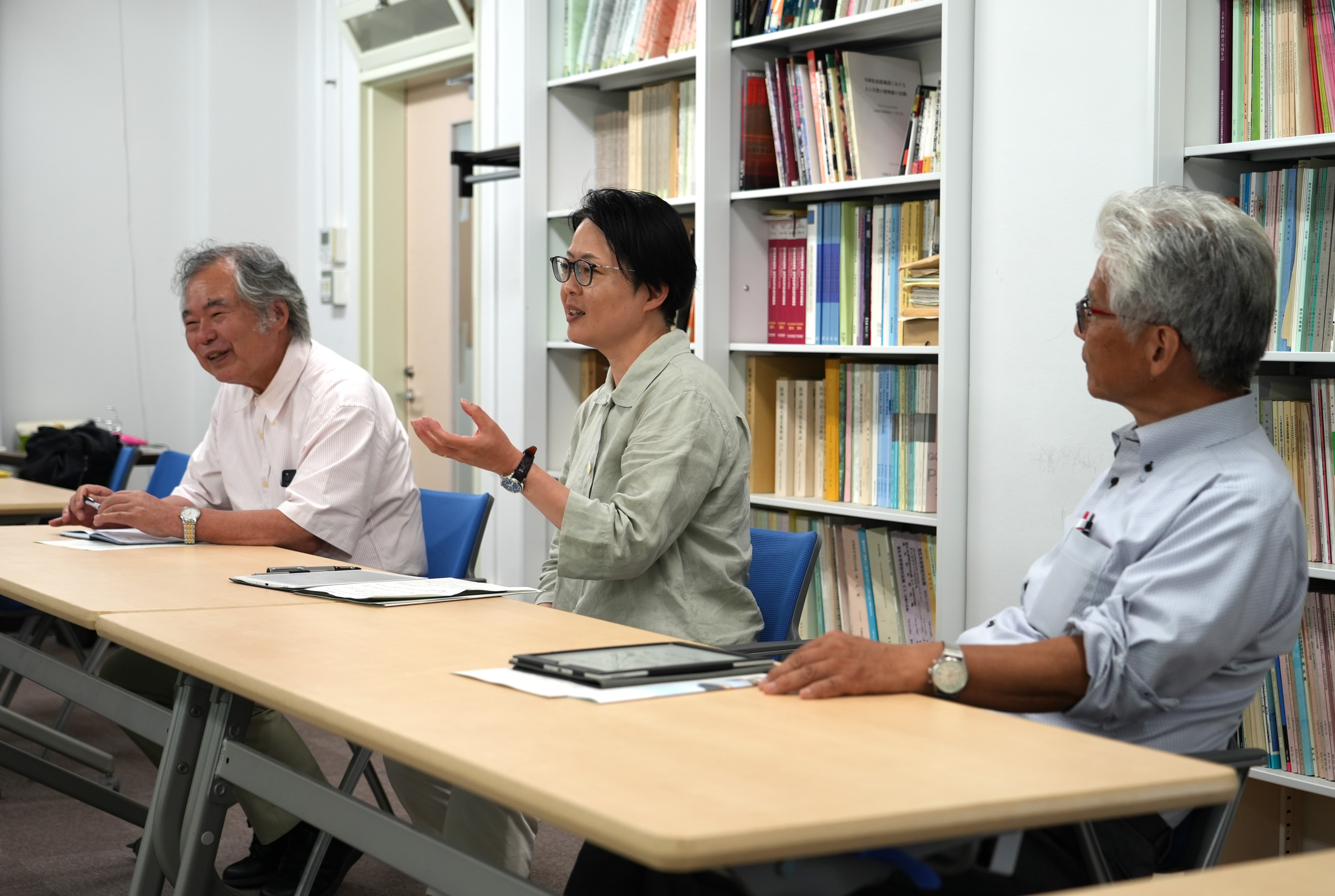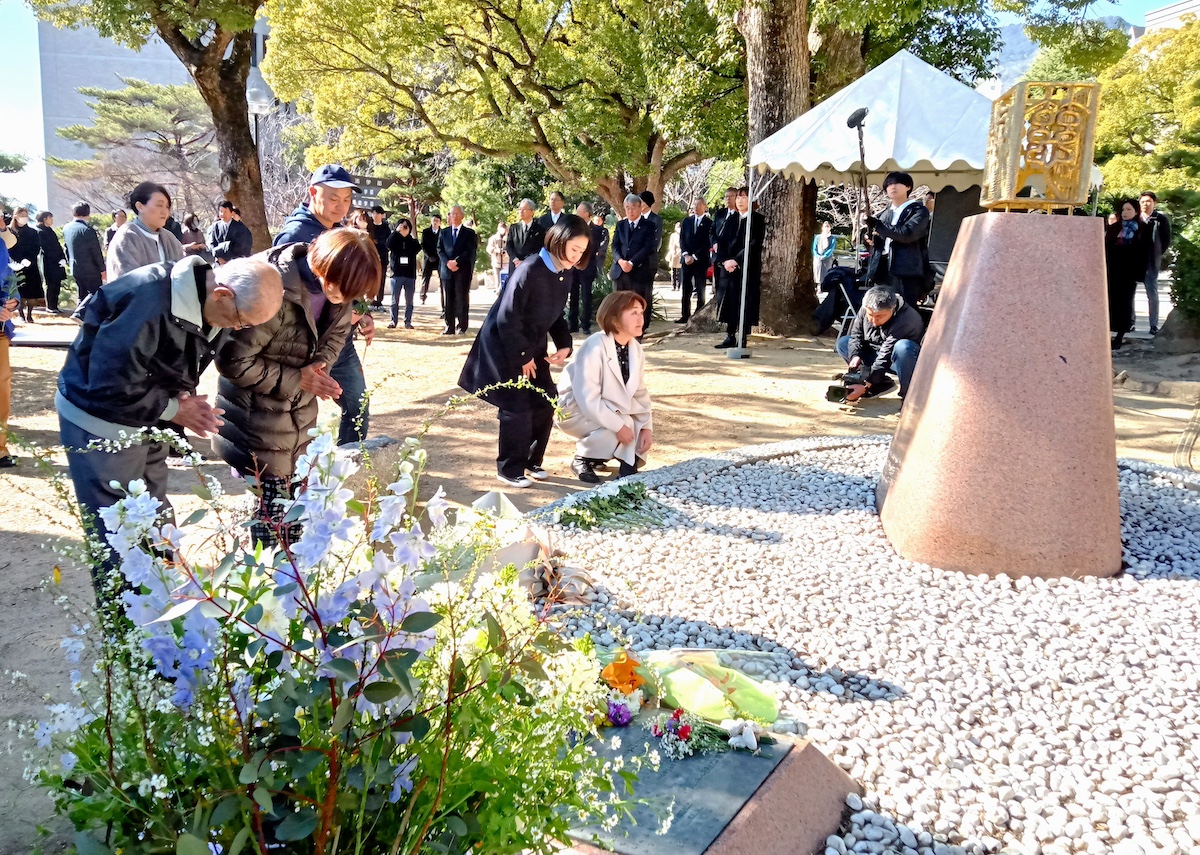There continue to be various approaches to disaster management and prevention regarding the possibility of future Nankai Trough earthquakes. The Nankai Trough is an offshore submarine trench that runs from Shizuoka Prefecture down to the seas east of Kyushu. The underlying fault is the source of a potentially devastating Nankai mega earthquake, expected to occur on the Pacific side of West Japan in the coming years. As a research institution located in a disaster area, Kobe University has been comprehensively researching how to ensure the safety of cities since the 1995 Great Hanshin earthquake. Consequently, researchers are currently working out how to design a sustainable, resilient city that can last for hundreds or thousands of years, ensuring the safety of future generations.
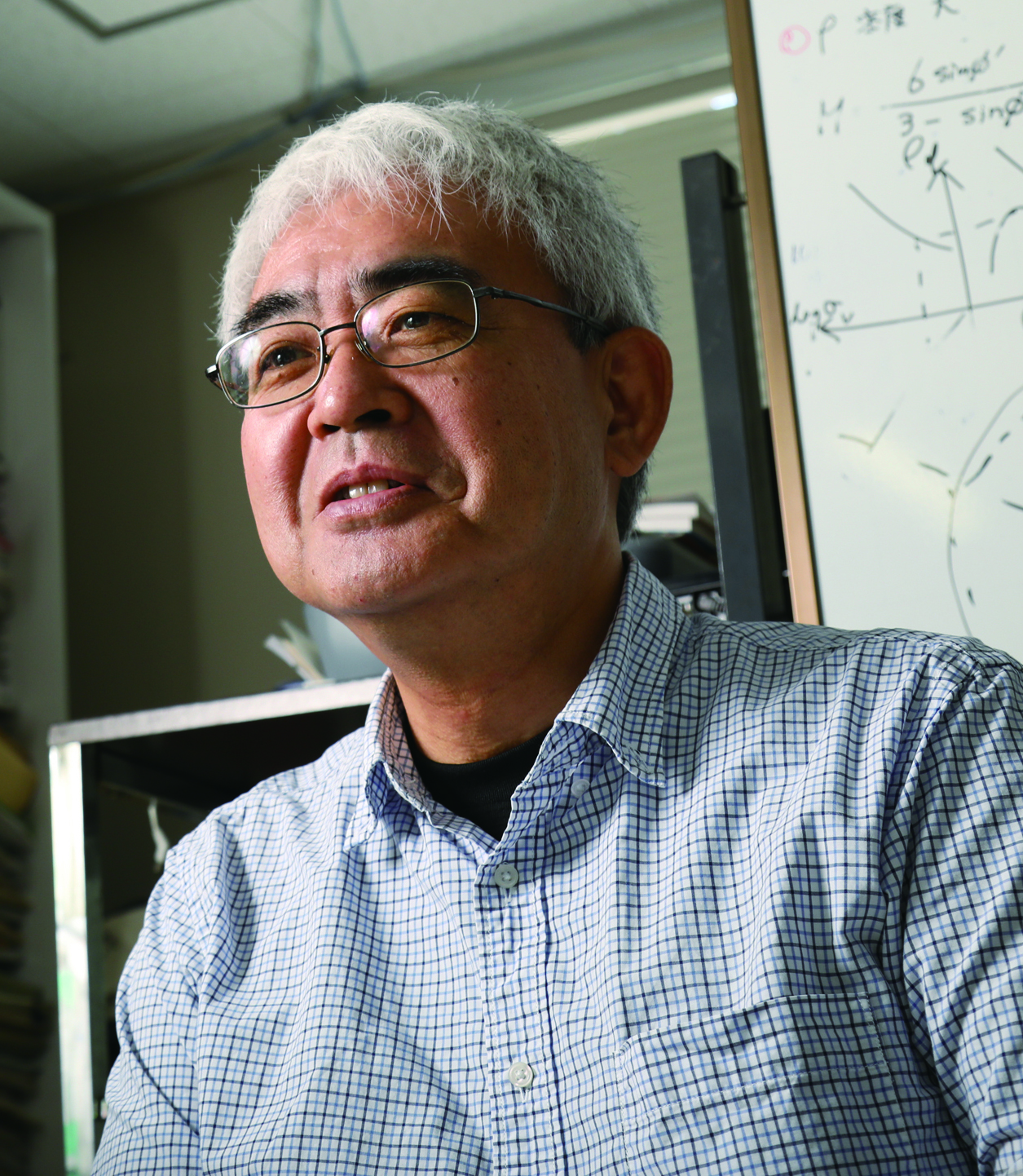
at the Research Center for Urban Safety and Security, and the Graduate School of Engineering.
This new academic research unit is called ‘MIRAI: Multidisciplinary Integration for Resilience and Innovation’ (‘mirai’ means ‘future’ in Japanese). Striving towards such a vision involves keeping ideas and inspiration circulating around Kobe University and other institutes by promoting greater awareness of others’ research.
We spoke to MIRAI’s research unit leader, Professor IIZUKA Atsushi in order to find out more.
Please tell us about the establishment of the MIRAI unit.
Prof. Iizuka:
The unit was formed to gather experts from various fields at Kobe University, such as engineering, health sciences, humanities and social sciences, with the aim of researching disaster prevention and management. The MIRAI research unit is indispensable for allowing us to work together across different fields.
In addition to Kobe University, there are also other organizations in Hyogo prefecture that are using various methods to research disasters. These include the RIKEN Center for Computational Science’s K supercomputer, Hyogo Earthquake Engineering Research Center’s E-defense system; and the JAMSTEC (Japan Agency for Marine-Earth Science and Technology) Center for Deep Earth Exploration’s vessel ‘Chikyu’, which is measuring the Nankai Trough. One of the goals of this project is to make Kobe University a disaster prevention hub, where all this knowledge and data can be collated.
I think of the MIRAI unit as being like Kobe University’s ‘circulatory system’. Like blood travels around the body, I would like to invigorate the university by circulating knowledge, ideas and inspiration.
The idea is to have everyone involved in one joint research project?
Prof. Iizuka:
No, our plan is to have different research units working on various projects simultaneously. For example, I am now working on the Integrated Earthquake Simulation (IES), while the Research Institute for Economics and Business Administration is predicting how the Hanshin Expressway would be affected during a disaster. Meanwhile, research into how people’s mental health and wellbeing are impacted by disasters is being conducted by the Graduate School of Health Sciences, and the Graduate School of Human Development and the Environment. The achievements of each project can inspire each researcher’s work- even if they are in a different field. For this reason, there is a multidisciplinary meeting every month so that we can look at what is happening in each research field and share our thoughts and opinions.
So it’s like a follow-up meeting?
Prof. Iizuka:
Yes. There are also groups that students can get involved in too, such as the Creative Dojo (‘Research Unit for Future Creation & Innovation Creative Dojo’) and various events, such as academic symposia, that allow us to achieve greater mutual understanding across disciplines. Researchers can discover new perspectives by participating in these events. New perspectives and understanding of other research areas is how we can keep ideas and information circulating throughout Kobe University.
These new perspectives enable researchers to conduct deeper research through synergizing results. This means that research field frameworks will also start to change. Consequently, this will also alter how Japanese people accumulate collective knowledge.
The Integrated Earthquake Simulation (IES)
What is the Integrated Earthquake Simulation (IES)?
Prof. Iizuka:
IES (Integrated Earthquake Simulation) is one of the projects implemented by MIRAI and it has recently been developed into an integrated engineering system. This project involves Tokyo University’s Earthquake Research Institute among others, and uses the K supercomputer to process large amounts of data such as geographic information and property registers.
This allows us to conduct an earthquake simulation over an entire city. As well as information about infrastructure etc., we can also input data on each and every building allowing us to simulate the possible effects of various disasters in detail. This provides more concrete guidelines for disaster reduction and prevention policies.
IES has the potential to simulate a variety of disaster scenarios over a wide area with high precision. Its application is not just limited to enhancing hazard maps. The range of scenarios encompasses every possibility we can think of. For example, there are thousands of possible disaster scenarios resulting from a a Nankai Trough earthquake. However, if we calculate all of that using the K Supercomputer, we can obtain quantitative data on the potential risks facing a particular spot in the city.
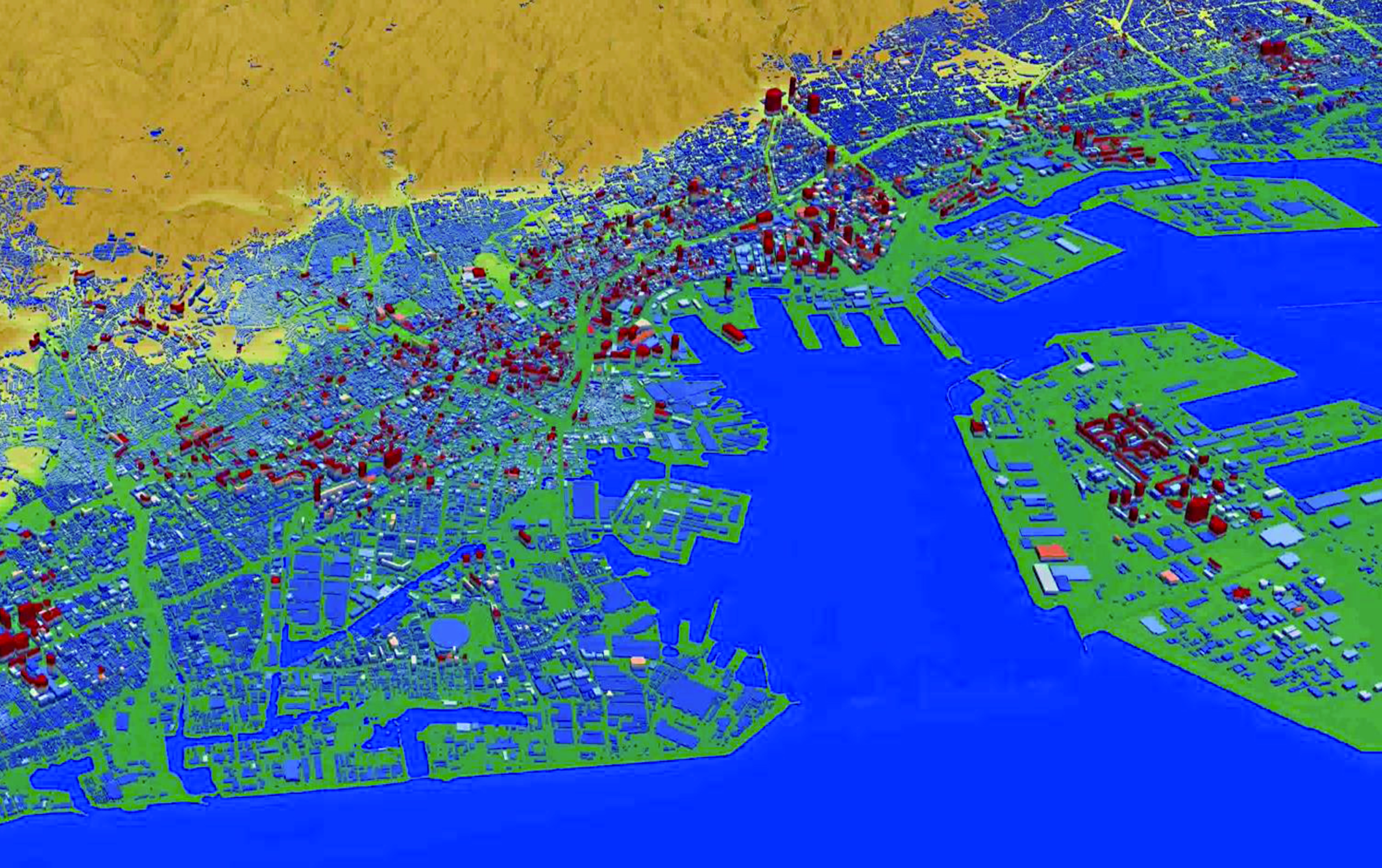
It is possible to integrate and visualize varied data using the Integrated Earthquake Simulation.
Won’t this affect land prices?
Prof. Iizuka:
Not only that, current methods of property management, insurance and investment may also change due to our research results. IES can simulate not only earthquakes, but also a wide range of other disasters such as tsunamis, heavy rain, floods and typhoons at the same time. Therefore, it is possible to analyze the simulation data for compound disasters.
Bringing the Kobe Model to the World
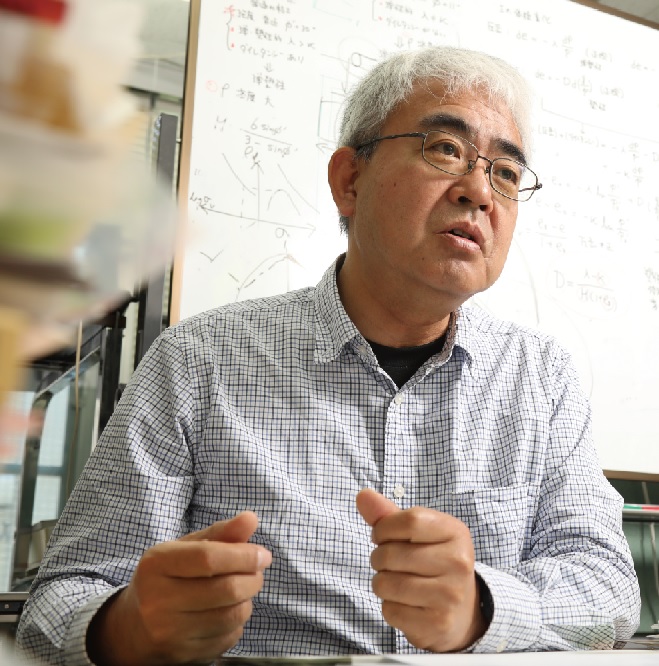
How will this be implemented into society?
Prof. Iizuka:
By establishing a technological research association. This will be comprised of universities, research institutions and public private industries. Using the technologies like IES that we have developed as a base, each industry can commercialize them by creating business models. In other words, the aim is to create a market for disaster reduction and prevention.
The government currently bears the responsibility for planning resilient cities. But if disaster prevention is commercialized, this responsibility will be borne by private economic activities. I term this a ‘paradigm shift’.
So, these research achievements are made available to the private sector for free?
Prof. Iizuka:
That’s right. The researchers participating in the unit should agree on this point.
Rather than focusing solely on the immediate benefits of the project, I would like to contribute to societal development (including our university itself) by making our research more widely known in order to attract talented students and researchers in the area.
I would like to establish a ‘Kobe Model’ encompassing all of these aspects from regional cooperation (ie. making Kobe University into a hub linking disaster reduction and prevention research institutes) to connecting with the next generation. Subsequently, I’would like this model to spread to other cities.
Does your project outlook also include overseas?
Prof. Iizuka:
In fact, we are currently setting up a collaboration with the University of California, Berkeley. The UC Berkeley have conducted earthquake simulations for the entire city of San Francisco. I would like to mutually exchange data with them. I think we can reach the next level of innovation if we form a strong collaborative partnership.
We also need to keep knowledge and ideas circulating within Kobe University- this is vital for the MIRAI project.
Creative Dojo: Research Unit for Future Creation & Innovation
The Graduate School of Engineering’s ‘Creative Dojo’ was established in April 2016 with a motto centered on ‘the importance of creating human-centered value engineering for people’s happiness and welfare.’ According to Professor Iizuka, the research unit is ‘the key to realizing a fusion of reasoning’.
It provides a network through which members can share their ideas and perspectives regarding solution and implementation policies, as well as debate different viewpoints, regardless of whether they are academics or students.
Industries have also taken part in the Creative Dojo and various workshops have been held. Experts from different fields discuss the same issues allowing the research topic to be viewed from multiple angles. As Professor Iizuka stated, it provides a space for knowledge and ideas to circulate.
The Creative Dojo also holds symposia, such as the 2017 and 2018 ‘MIRAI Festival’ events. Kobe University researchers from various specialist fields, among others, made TED-style presentations regarding their views on the future in order to brainstorm how society might work. This event was also open to the general public and the audience could interact directly with the speakers. This not only provided an opportunity for information exchange between lecturers but also allowed for knowledge exchange between experts and the general public. Thus, the Creative Dojo provides a platform for greater mutual understanding.
Witnessing the fusion between computer science and other fields at the University of California Berkeley.
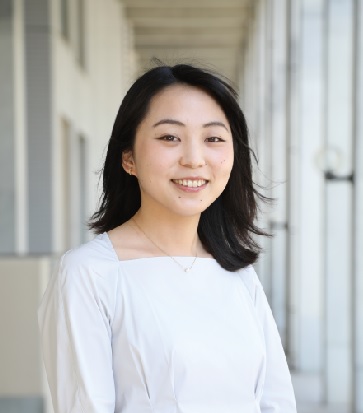
Graduate School of Engineering Civil Engineering Major Masters Program Second Year student
I conducted research into deep seafloor stability issues based on geotechnical engineering in Professor Iizuka’s research laboratory. It was interesting because I could make interpretations regarding soil mechanics using the phenomena that the Earth Sciences faculty observed.
Subsequently, I entered graduate school and spent one year and 4 months studying abroad at the University of California, Berkeley. I took part in the city simulation research group as a guest researcher, conducting transport and pipeline simulations. The research involved using a supercomputer to predict the effect that earthquake damage to underground pipelines would have on transport systems in the California Bay area (population 7.5 million).
First we overlaid the pipeline and transport networks and then superimposed a map containing data showing the strength of tremors from thousands of earthquake simulations. This allowed us to see the effects of earthquakes in detail over a wide area. For example, in the areas with strong tremors the pipelines break and this causes a blockade of nearby roads, which in turn impacts evacuation. I continue to have online meetings with the American team and this research will form part of my Master’s thesis.
I have also been able to participate in Kobe’s Integrated Earthquake Simulation (IES) as a part time researcher. It has been a valuable experience for me as the project matches my own research aims. I enjoy observing the interdisciplinary fusion between computer science and civil engineering when using IT simulations.
Using the engineering skills I learnt in America and at Kobe, I would like to realize further wide ranging collaborations between different fields, such as IT and agriculture, and IT and medicine. My current research feels very worthwhile as I can see how it benefits people.
Note: this article is also available as a PDF in Vol. 07 of the Kobe University Newsletter "Kaze".






